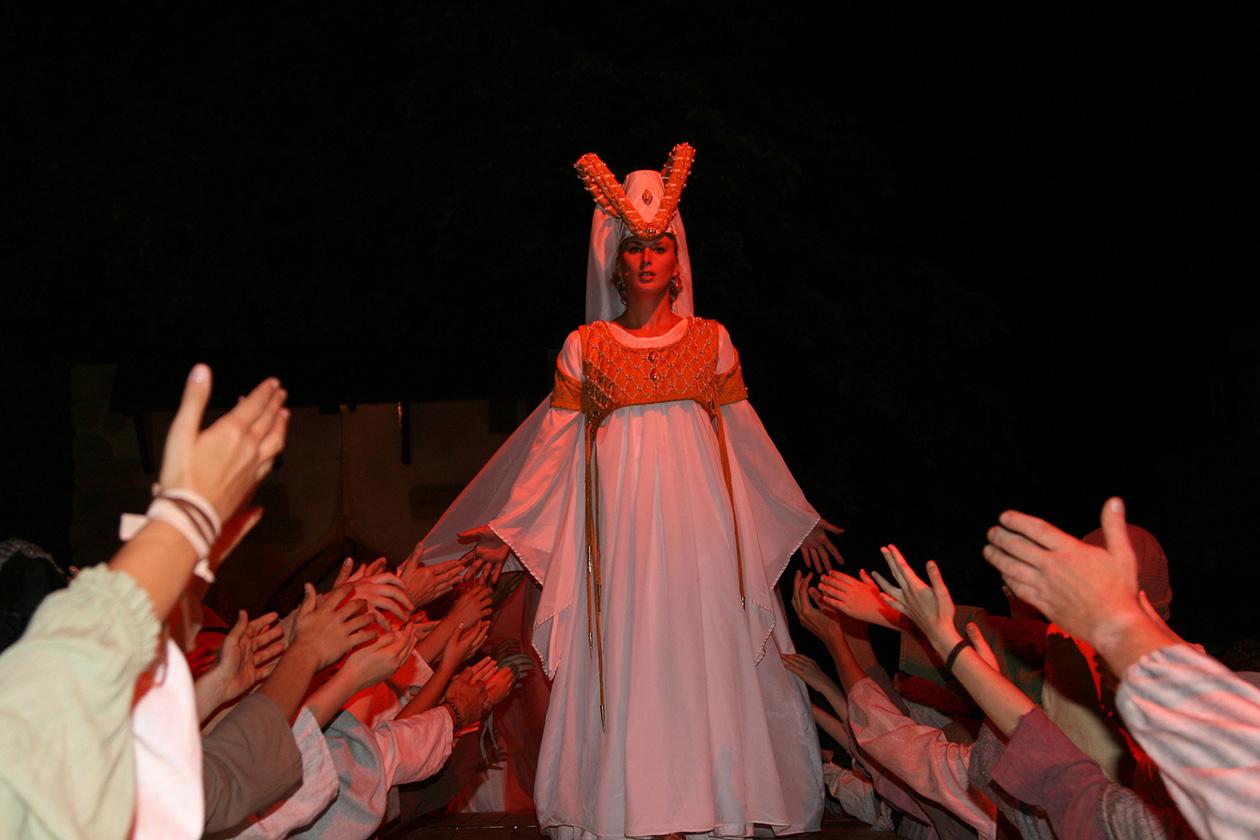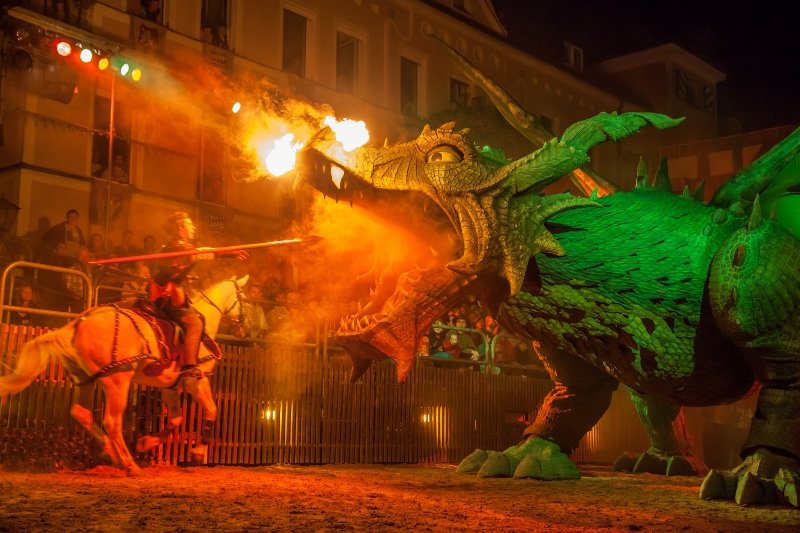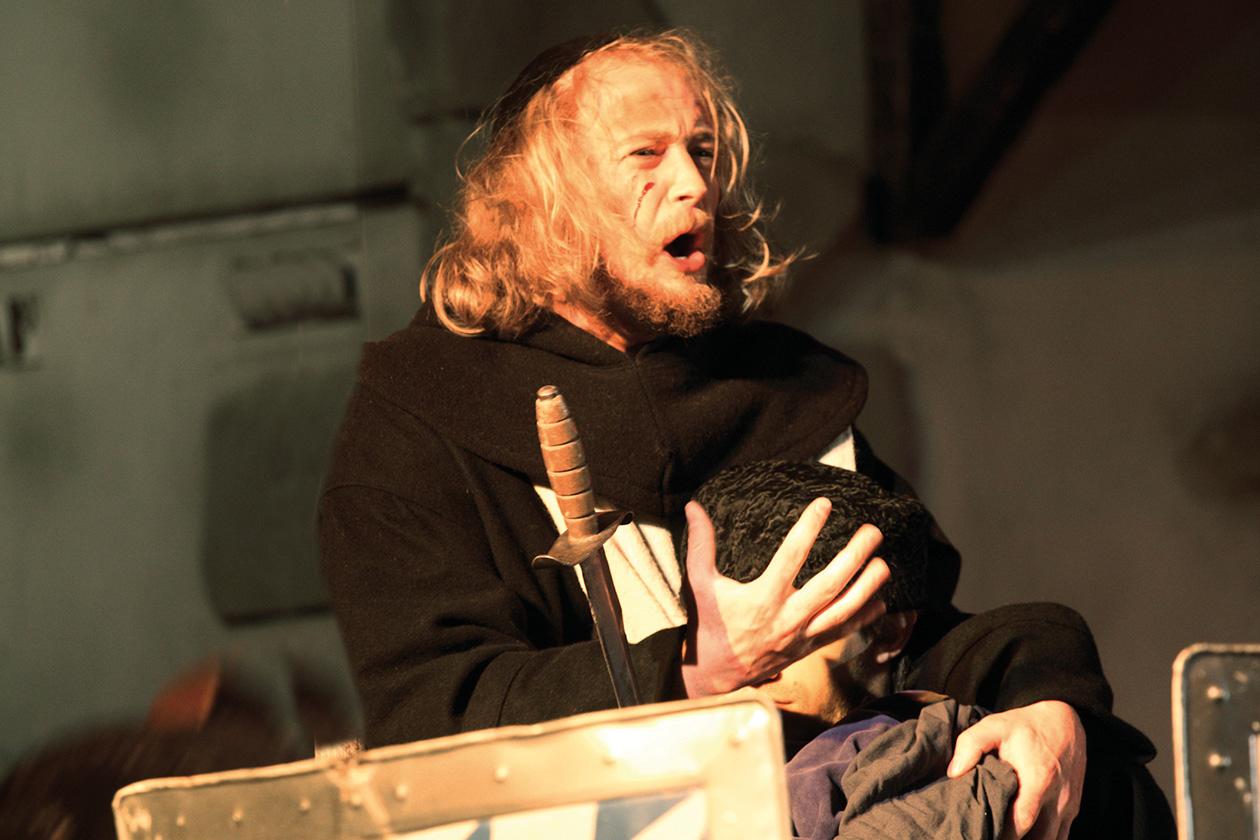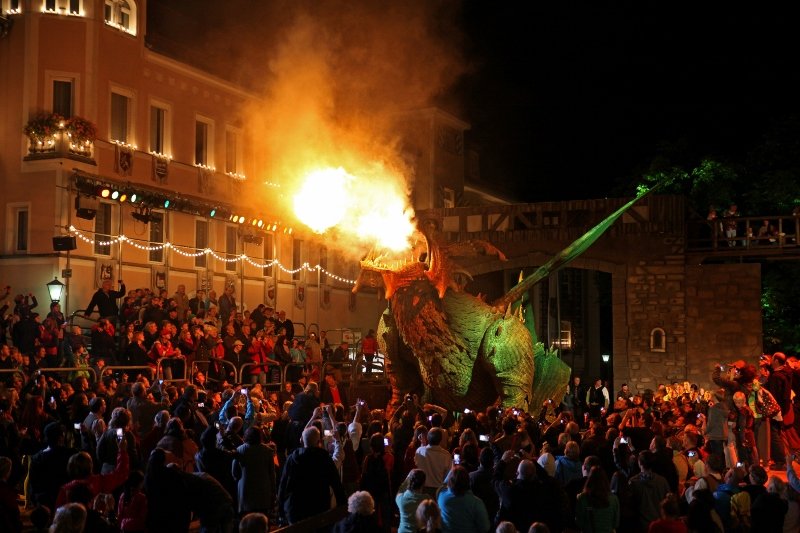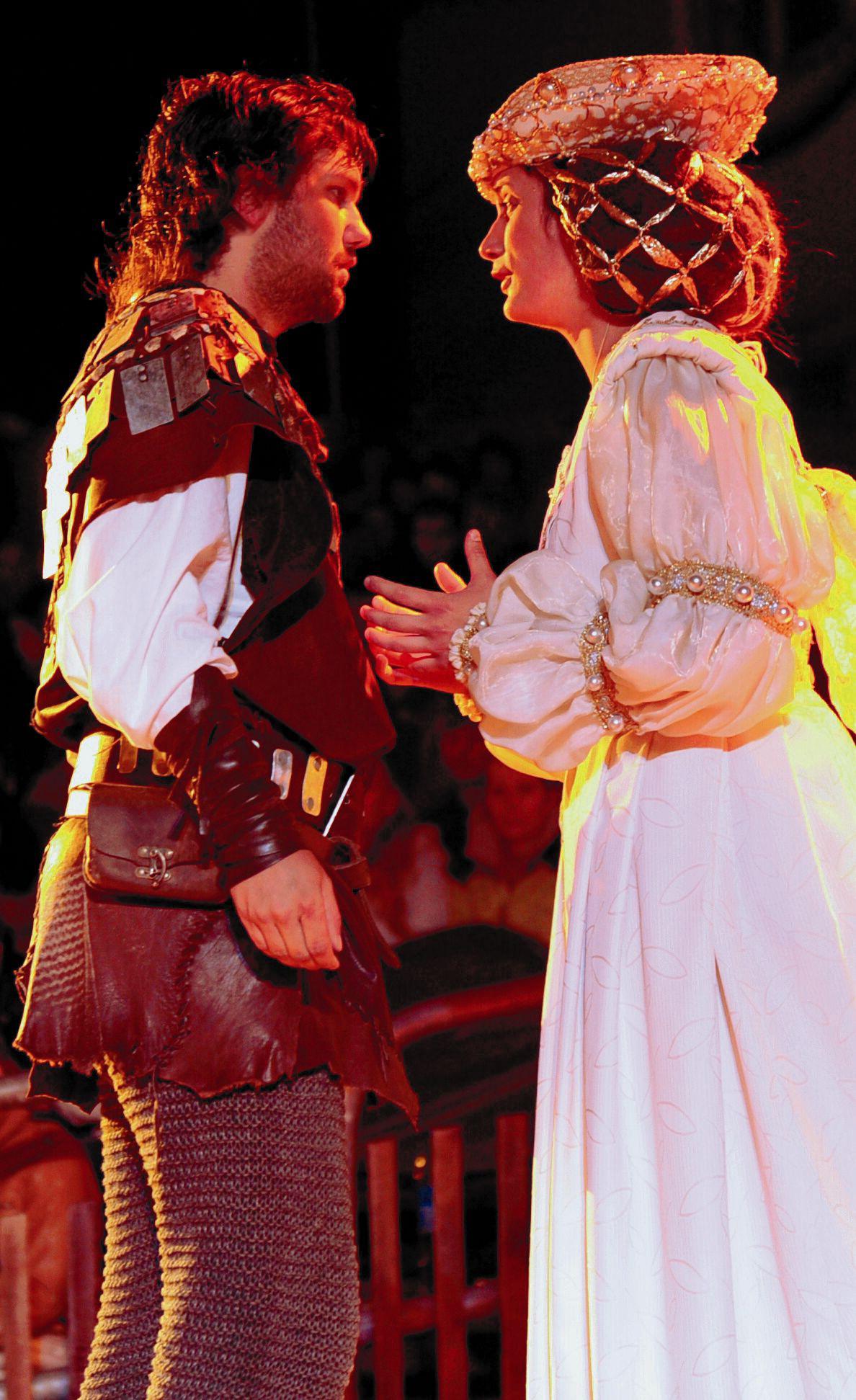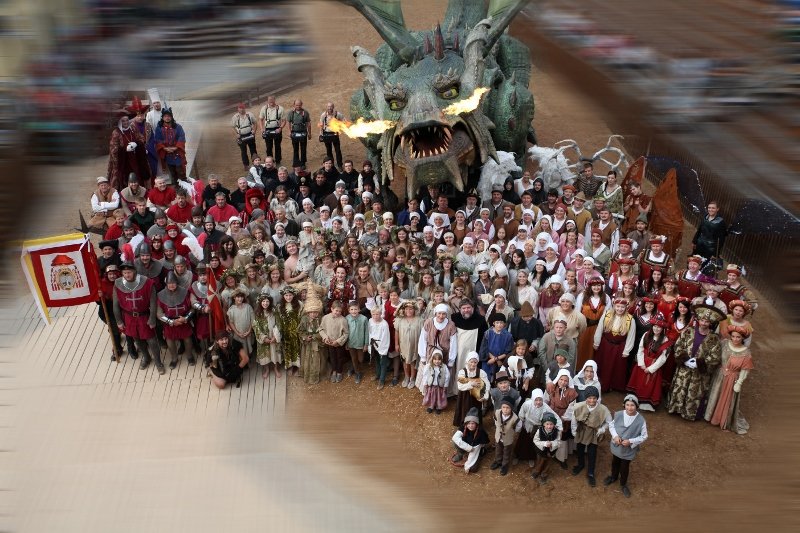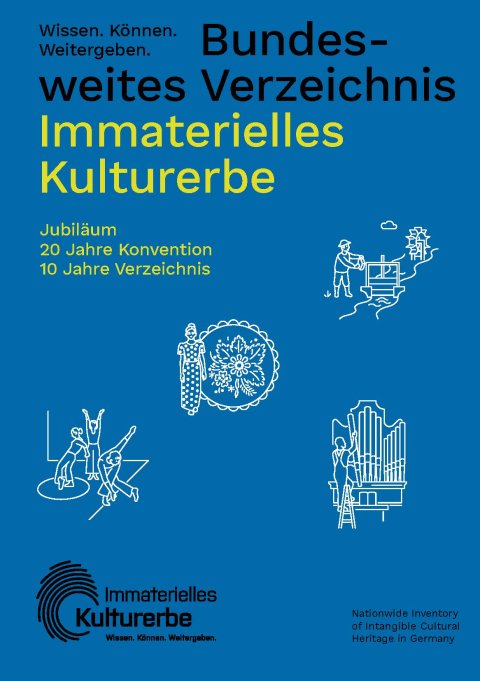Nationwide Inventory of Intangible Cultural Heritage
The “Dragon Stab“ of Furth im Wald
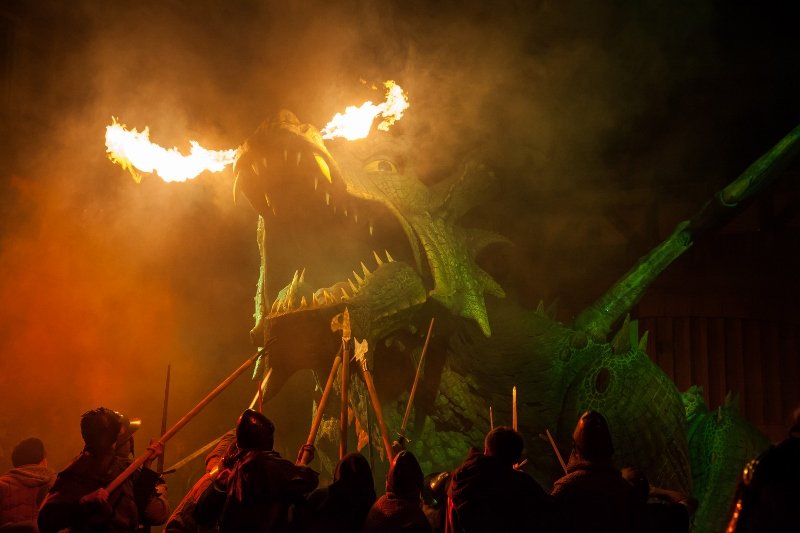
The “Drachenstich” (Dragon Stab) in the Bavarian town of Furth im Wald is a folk play with a tradition of almost 500 years. It keeps its basic motifs at its core, but has developed in a lively exchange with changing realities of life. The Drachenstich is the highlight of the year for the inhabitants of Furth and its surrounding area.
Facts & figures
Crucial date: August
Inscription: 2018
Where to find: Furth im Wald (Bavaria)
Contact
Drachenstich-Festspiele e.V.
Chairman Sandro Bauer
@email
www.drachenstich.de
Each year, there is a big rush to audition for the roles of the festival, especially amongst children and adolescents. Tradition also requires the knight and the "knightess" to be recast every year as well. The young performers of the "knight couple" are the year-long representatives of the city in public and in the media.
All 1,500 performers of the folk play and parade are highly committed to the city. The contributors come from all ages and social classes and act on a voluntary basis. A festival society, which was founded in the 19th century by the citizens, oversees the organisation of the event. Participants of the festival are organized in various ways, ranging from casual meetings in local pubs and excursions to an official association.
The Drachenstich is a cultural tradition that was once widespread throughout Europe. Originally, it was part of the Corpus Christi procession: A knight dressed as St. George fights against a dragon - a timeless parable on the fight between good and evil. The rational mind in the Age of Enlightenment makes this custom appear as an outdated spectacle, and so it ceased to be significant almost everywhere, but not in Furth in the Forest. However, when the performance interfered too much with the Corpus Christi procession in 1878, the local chaplain decided to ban it. A storm of indignation rose within the population, which continued to perform the Drachenstich in defiance. Finally, they agreed on the complete detachment of the old custom from religious contexts and revived it as a festival.
The constantly changing scripts of the festival deal with the reality of life at the Bavarian-Bohemian border. The Drachenstich used to be a joint festival across the border for centuries until political conditions changed in the 20th century. During the time of National Socialism, the festival called for the "crusade of the Germans against the Hungarians". After World War II, the changes made by the National Socialists were reverted. Now that Furth found itself on the edge of the Iron Curtain, the Bohemian Hussite movement and the dragon symbolized the Communist threat from the East.
Today, the new version of the festival is based on Furth's current situation in the middle of Europe. The religious wars of the medieval times now reflect the mechanisms of modern religious wars, and the medieval Hussite movement is historically recognized as the first aspiration to Czech identity. Thus, in a converging Europe, the festival finally highlights friendship with the Czech neighbours again. The adaptability of the custom is also reflected in the figure of the dragon. While it used to be a simple costume worn by the city’s pauper it is today a fully-animated mechatronic high-tech robot manufactured in the Bavarian Forest. It even made it into the Guinness Book of Records as the largest walking robot in the world.
